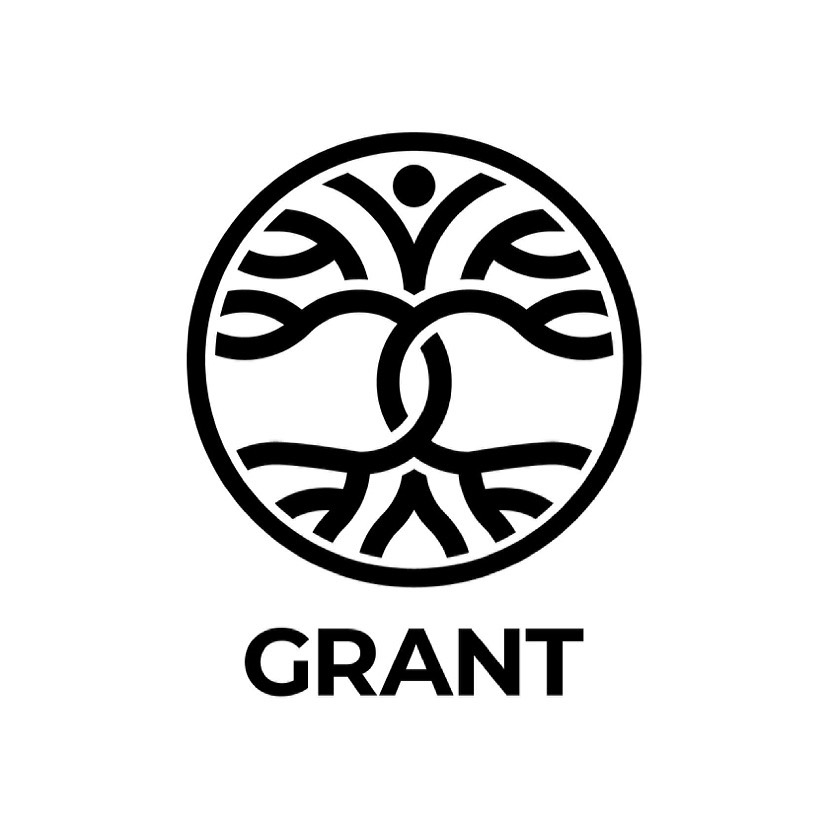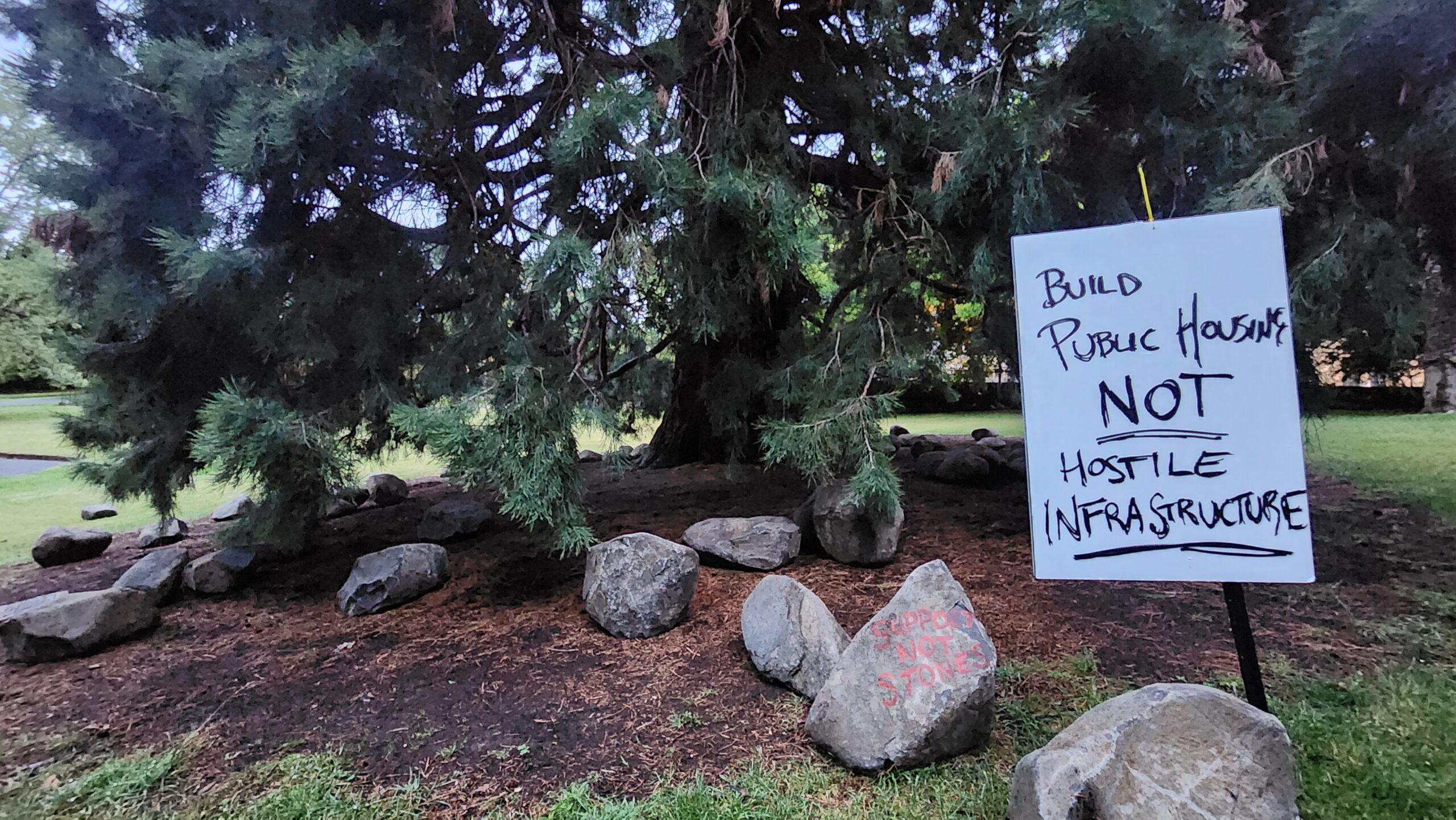Members of the Hobart community have sent a message to Hobart City Council by painting ‘Rocks won’t fix homelessness’ and other words on numerous now-moved boulders that were placed under two sequoia trees in St. David’s Park, Hobart.
Last week, an individual experiencing homelessness, who regularly sleeps under one of the two sequoia trees, was given a 30-day ban from entering the park, and dozens of large boulders have been placed under both trees to restrict any further tents from being erected underneath. This individual’s dog was then separated from her and taken to the pound.
“You can’t just place giant boulders underneath a tree you don’t want people to sleep under and dust off your hands of the issue. This hostile infrastructure is specifically aimed at stopping homeless people from congregating here, which just pushes the problem to another area. The solution to homelessness is not restricting people from sleeping in public places, especially when this person has been told it will be months before Housing Connect can give them secure housing!” says Amy Booth.
Grassroots Action Network Tasmania (GRANT) is aware that Hobart City Council are concerned for the health of the 86-year-old sequoia trees, and this is the main reason for restricting sleeping underneath the trees. However, whilst the importance of these two trees should be taken into consideration, this exclusionary approach in the weeks leading up to Christmas is disgraceful.
“We have seen this type of response to homelessness happen in cities across the world, and the common theme is that homelessness levels haven’t decreased – instead, people become displaced from the areas they are most comfortable in, and are forced to go to areas that are farther away from their communities that are often less sheltered and less safe. Hobart City Council states that their “Mission” is “Working together to make Hobart a better place for the community”, but it seems their definition of community doesn’t include the needs of people experiencing homelessness.” Says Amy Booth.

